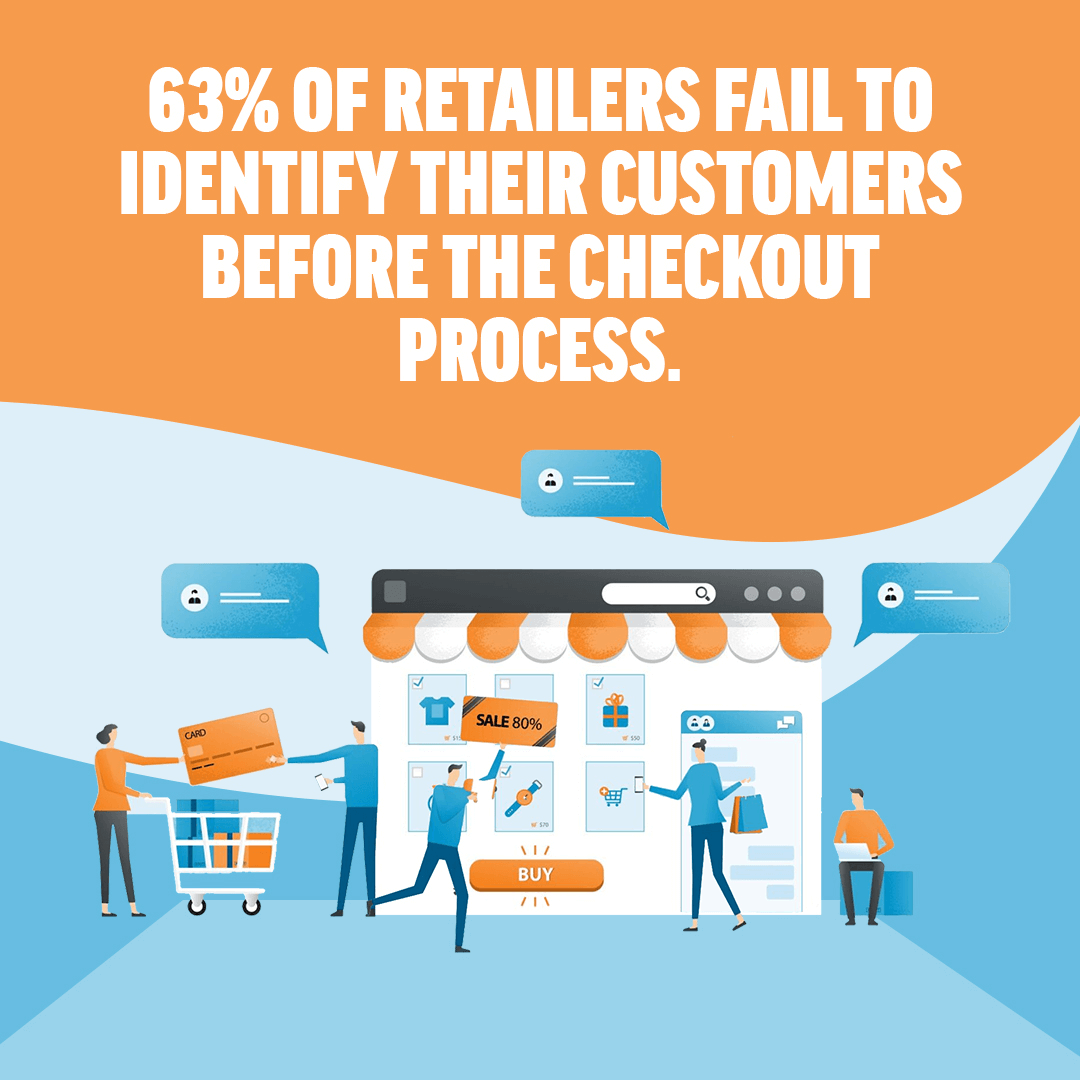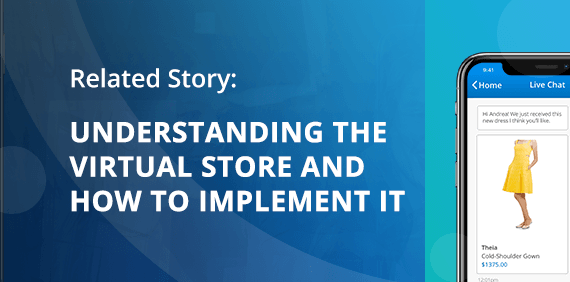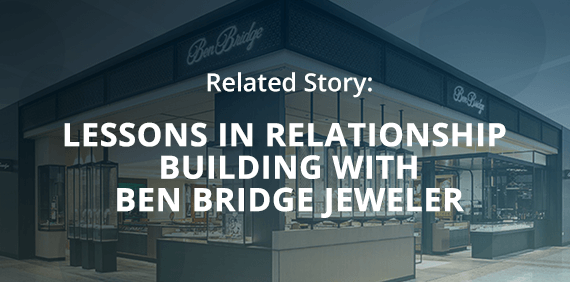The Ultimate Guide to Clienteling:
to Implement It
The retail landscape has gone through a profound change in the face of a pandemic that confined us to our homes for the better part of a year.
As retail stores start to reopen and life slowly starts returning to normal, there’s still a lot of uncertainty in people’s minds about in-store shopping.
What hasn’t changed, however, is their desire for a personal shopping experience.
Even as they enjoy the safety and convenience of online shopping, customers still crave the human connection — the spontaneity of interacting with a store associate when committing to a purchase.
Retailers must therefore redefine the modern customer experience. Here’s where clienteling comes in.
What is clienteling?
Once a buzzword that used to mean “catering to clients,” clienteling has a much broader definition today.
Clienteling is about using customer information efficiently to deliver personalized experiences that boost customer loyalty and satisfaction, whether in-store or online.
Essentially, clienteling is a technique that retailers use to establish meaningful, long-term relationships with customers.
This is done by arming sales associates with real-time customer data including their purchase history, wish lists, preferences, and behaviors. Clienteling solutions and retail technology enable sales associates to access such information from a mobile device so that they can engage customers with useful recommendations and guidance.
Not only does this boost customer satisfaction but it also creates upsell opportunities, thus increasing the customer lifetime value.
Clienteling vs. customer service
Clienteling is not the same as customer service. Even though their end goal is the same — to build lasting customer relationships — there is one key difference between the two.
Customer service uses face-value information to engage customers while clienteling uses real-time customer data — including their needs, wants, preferences, attributes (like shoe size) and past purchases. The latter is crucial in identifying your customers so you can propose custom solutions for them.
Unfortunately, however, 63% of retailers fail to identify their customers before the checkout process. That’s too late for an associate to build a meaningful relationship with the customer or influence their current purchase decision.

Why clienteling matters in today’s retail landscape
With customers being wary about returning to physical stores in the wake of COVID-19, retailers need to be able to offer personalized online shopping experiences. It’s no question that e-commerce will remain popular post-pandemic; data from Digital Commerce 360 shows that online retail sales grew 32.4% year over year in 2020 and are up 39% from the first quarter of 2021.
However, the increased popularity of e-commerce also means that the landscape is a lot more competitive, and retailers need to implement strong customer engagement practices to win. Guided or assisted shopping sessions can go a long way in doing just that.
Implementing virtual clienteling — i.e., using data and technology to serve online shoppers — certainly gives retailers a competitive edge. That being said, virtual and in-person clienteling should be complementary, not mutually exclusive. The platforms that you use both online and offline should be tightly integrated and pave the way for a smooth experience across channels. That way, if a customer wanted to continue an online conversion in-store (and versa) they should be able to do so.
Sales associates need to be able to offer personalized product recommendations or suggestions (based on data collected about a customer’s behavior and preferences) as they browse for products.
Clienteling solutions help associates connect with online shoppers over SMS, video, live chat, or email to offer guidance, answer queries, make personalized recommendations, or follow up on past interactions.
Even as stores open, store associates will need to be more responsive to customer needs in order to stay competitive and be profitable. Clienteling can empower store associates with valuable insights from the customer data saved in your CRM or POS system and help them elevate the customer journey.
Also, in-store shopping experiences have greater chances of leading to new product trials or impulse buys than online experiences. Clienteling apps can help store associates use real-time data to influence customer purchases more effectively, resulting in greater store sales.
Benefits of clienteling in retail
When done right, clienteling can result in repeat business — if customers enjoy the shopping experience you provide, they’re sure to keep coming back for more. Plus, clienteling allows associates and customers to build relationships overtime, which further drives loyalty. After all, shoppers are more likely to come back if they’re assisted by someone they know, like, and trust.
All this translates to higher revenues and can also aid your customer acquisition efforts. Loyal customers are more than likely to recommend your brand in their social circles which can help you gain more visibility and new customers.
In addition, clienteling can enable your associates to anticipate customer needs (based on a knowledge of their preferences and behaviors). This makes it easier for them to identify cross-selling opportunities and encourage customers to buy complementary products.
How to set up your store associates for clienteling success
So, the big question is how do you set your store associates up for clienteling success? Salesfloor’s clienteling solution can help you elevate the customer’s omnichannel experience by empowering sales associates to provide personalized experiences to customers — both in-store and online.
It enables associates to have a comprehensive view of their customer’s transaction history and attributes so that they can anticipate their needs and provide personalized service.
Salesfloor’s dynamic rules can help to detect selling opportunities and even predict future purchase decisions. This enables associates to engage customers with the right messaging at the right time over live chat, video, email, text, or social media.
Associates can also create Personalized Boards or Lookbook pages for their customers. These are curated based on past conversations and customer data captured through the Salesfloor platform (in compliance with privacy regulations) and the associate’s knowledge of their customer’s preferences.
Examples of clienteling in action
Now that we’ve covered the ins and outs of clienteling and how you can implement it, let’s take a look at some great examples of clienteling in action.
- Relax The Back – Relax The Back is a health and wellness retailer specializing in ergonomic, back support products. With Salesfloor’s clienteling tools, they have been able to build long-term relationships with clients and offer more personalized services.They’ve noticed that even with extremely specific needs, customers are willing to purchase online as long as they can connect directly with a knowledgeable store associate. During the pandemic, they recorded 4X the number of Storefront page visits and a huge spike in office chair sales.
- BuyBuy BABY – BuyBuy BABY is a popular retail chain that sells clothing and other products for infants and toddlers. Using Salesfloor’s clienteling solutions, they continued to engage with prospective customers amid the pandemic across multiple channels. BuyBuy BABY’s clienteling initiatives have resulted in a 2x growth in sales and conversions during this time.
- Saks Fifth Avenue – Saks has been using Salesfloor’s clienteling solutions to enable store associates to connect with customers on a personal level during the pandemic. Not only have they recorded a 3X increase in incoming requests, but also a 4X increase in the number of emails being sent by associates during this time.
Moving forward with clienteling
Clienteling has evolved way beyond “catering to clients” or storing data in a CRM (or even a customer black book). It’s about delivering truly personalized customer experiences by anticipating customer needs, providing guided shopping, predicting purchases, and connecting with customers over their preferred channels.
Salesfloor’s clienteling solutions can help you achieve all that and so much more. Contact us today to learn how you can elevate your customer’s omnichannel experience with cutting-edge technology from Salesfloor.

